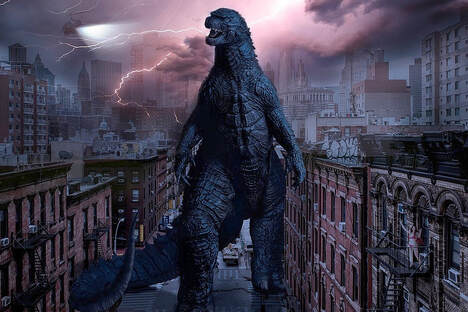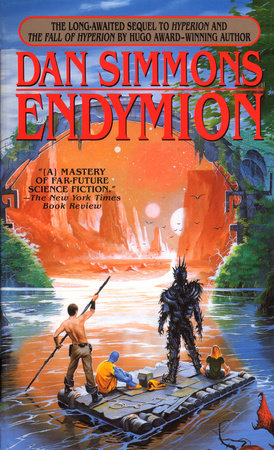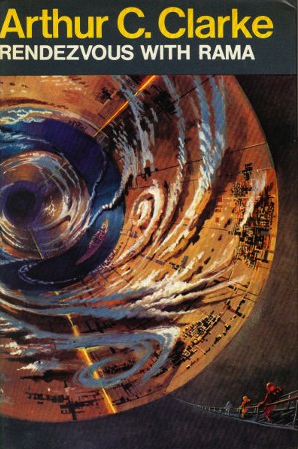 Movies often take artistic license when it comes to well-known physical, chemical, and biological principles, and there are certain stunts in movies that do not resemble the actual occurrences that happen in reality. However, most of these things are hardly noticed by the majority of the public who, truth be told, is there to mostly have a good time and not to nitpick about whether what is depicted could happen in the real world. There are, of course, some limits. You do not want to show something so laughable that will compromise your viewers' suspension of disbelief, but where do we draw the line? In this post we are going to examine some of things in films that defy the laws of nature. Decapitation or Brain Destruction Occurrence: In movies you sometimes find that a character is decapitated, or their brain is destroyed, yet its body nevertheless lingers on in the same position for a few dramatic seconds before falling. Reality: Maintaining the posture of a body with joints (for example knee and hip joints) against the force of gravity is a continuous second by second task. Upright standing bodies even at rest are maintained this way due to the forces of muscles contracting and pulling against bones. If these muscles were to relax, the body will immediately collapse like a puppet suddenly deprived of its strings. What makes muscles contract is the action of the brain. The brain constantly sends signals through the nerves for the muscles to contract to a greater or lesser degree in order to keep bodies upright and regulate posture. If the brain is severed from the body or is destroyed these signals cease, muscles relax, and the body falls instantaneously to the ground. Falls Occurrence: When people in movies lose consciousness and fall from a standing position, they never seem to clearly bang their heads or certain areas of their bodies against the ground. Reality: Falls in real life can be life threatening mostly because of the damage sustained by head impacts. In movies, the actors or their stunt doubles fall in ways that protect the head and other areas such as the tailbone from injury. These “Hollywood Falls” are designed to dissipate the energy of the fall and avoid injury. In the real world, when a person loses consciousness and falls, they cannot maneuver their bodies into the right position to avoid serious damage, especially to the head. Growth of Mass Occurrence: Some movies feature an entity or a character that undergoes a transformation which greatly increases their size in a matter of seconds or minutes. Reality: A living thing cannot just grow to a large size without an equally sizeable input of mass and energy (for example carbon dioxide and sunlight). Any added mass has to come from somewhere. You can’t get something from nothing. Additionally, there has to be a mechanism to generate the extra mass from a precursor, and any such mechanism would presumably require a number of steps and would take time not only to generate the extra mass but to distribute it properly. For example, a type of algae called kelp can use the carbon dioxide in the water to make plant material through photosynthesis, and it can grow in optimal conditions up to two feet per day! This makes it one of the fastest growing organisms on the planet, but still far short of the growth spurts exhibited by some monsters, aliens, or other fantastical entities in the movies. Explosions in Space Occurrence: When people within a spaceship witness a large explosion in space, they hear the sound of the explosion and the spaceship is rocked by the shock wave. Reality: Shock waves are areas of compression of a medium such as air. The explosion pushes air molecules into each other, and that effect propagates to neighboring air molecules and so on forming a shock wave that upon reaching our ears is perceived as a loud sound. The medium of space is not dense enough to propagate the type of shock waves that would rock spaceships and be audible to human beings. Freezing or Blowing Up When Exposed to the Vacuum of Space Occurrence: Movies depict people freezing or blowing up when exposed to the vacuum of space without wearing a space suit. Reality: Because space is largely devoid of mass, two of the three ways by which the body loses heat, conduction and convection, are missing. Heat can then only be lost by radiation. A person suddenly exposed to outer space would not instantly freeze and in fact would only feel mildly cool. Similarly, a person exposed to the vacuum of space will not explode. The air in their lungs would expand causing serious damage if it is not exhaled, and a certain amount of the water in the blood and soft tissues would transition to the gaseous phase (ebullism) which will lead to significant swelling and bruising of the body, but not an explosion. The greatest threat is lack of oxygen which would lead to loss of consciousness in a matter of seconds followed by death. Groups of Animals Surviving by Preying on Themselves Occurrence: Some movies show a large group of animals in a deserted or isolated environment that have survived solely by preying on each other. Reality: This situation is untenable because conversion of energy is not 100% efficient and doesn’t happen at once. Several animals would have to be consumed over the life cycle of a single animal for it to reach maturity and procreate. The new animals would fail to produce a replacement for the animals they have consumed. Each generation of the animals will become progressively smaller until they become extinct. Humans or Monsters of Very Large Size Occurrence: In movies, huge beings, many several stories high, are depicted with bodies that are not that different in proportions from the bodies they would have if they were much smaller. Reality: As bodies change in size, several of their parameters do not increase by an equivalent measure. An increase in body size leads to a much higher increase in body volume, and this creates all sorts of problems. Consider, for example, that a higher volume leads to a higher weight which has to be supported. The reality is that all those colossal beings depicted in the movies with those body plans would collapse under their own weight and also experience a host of other issues affecting things such as regulation of body temperature, blood circulation and aeration, metabolism, etc. Do any of these differences between the movies and real life bother you? Please leave a comment and let me know. Image of Godzilla from pixabay is free for commercial use.
2 Comments
The distinguishing characteristic of the science fiction genre is that it sets its stories in futures where there are scientific and technological advances that have greatly expanded the capabilities of humanity, as well as social changes that have altered society. But this merely describes the genre based on the settings it uses. However, what is its purpose? As it turns out, the general purpose of most science fiction is by and large no different from that of regular stories. Science fiction is often just an artifice that allows the storyteller to generate situations that produce ethical dilemmas and existential quandaries. A favorite topic in science fiction is what it means to be human. This has been explored in many science fiction settings including the epic saga of Star Trek and its many iterations. In Star Trek the Original Series, the iconic half-Vulcan half-human character of Spock, played by the late Leonard Nimoy, was constantly trying to reconcile the Vulcan devotion to logic and control of emotions with the desires of his human half. In Star Trek Next Generation, Data, the Android played by actor Brent Spiner, sought to be human. In Star Trek Voyager, the holographic doctor, played by actor Robert Picardo, aspired to have the same rights that a human being has. Another often encountered topic is the dichotomy between being an individual and being part of a society (of which the Borg are a recurring case in Star Trek), and what life is and whether it is morally right to extinguish it. A great example of the latter plot device in Start Trek Voyager, is an episode where two crewmen, Tuvok and Nelix are fused into one being (called Tuvix) as a result of a bizarre transporter accident. When the crew of the Enterprise finally figures out how to reverse the process, the blended character, Tuvix, decides he likes being who he is and states that separating him into the original persons would be tantamount to killing him. Should he be subjected to the process against his will? Should his desire to remain how he is be respected? Despite the merits of the above approach, these stories merely use science fiction as a means to an end, and do not exploit the full potential of the genre. Nevertheless, this approach is certainly several notches above the most common use of science fiction, which is as an excuse to pit humans against monsters or create flashy action sequences studded with spaceships, alien armies, and apocalyptic weaponry. In these settings, the futuristic backgrounds where the action takes place, the technology, and the science are often no more than an afterthought, even in many science fiction books where these topics can be examined to a greater extent than movies or series. In my opinion, science fiction is at its best when it explores science and technology in depth. I consider that this is the true purpose of science fiction, and those science fiction stories that adopt this practice as part of the storyline, which I call the Grand View of Science Fiction, are often the best ever produced in the genre. I will give you two examples.  The first example is the epic series of books set in the Hyperion universe, where the author Dan Simmons conveys one of the most magnificent and amazing visions of the future of humanity that I have ever read. The books are a tour de force in world building and they are awash with the application of scientific principles on a microscopic and macroscopic scale. One of the scientific advancements in this futuristic society is what are called “farcasters”. These are structures that employ encased black holes to bend space-time and generate gateways between different areas of a planet and between different worlds, allowing for instantaneous travel. This permits people to live in one planet and work in another one, and those who are rich enough have houses where the different rooms of the house are located in different worlds and are all connected by farcaster portals. However, one of the greatest images that endured in my mind after reading these books was that of the River Tethys. This is a river that flows across more than 200 different worlds in sections interconnected by farcaster portals! Simmons’ Hyperion books, of course, have all the requisite war, action, mystery, and intrigue along with plenty of social and religious commentary, but the exploration of concepts like the farcaster and their uses to create a multiplanetary society and shape its different cultures is one of the highlights of this series.  The second example is Rendezvous with Rama by Arthur C. Clarke. In the novel a huge cylindrical vessel enters the solar system and a team of astronauts is sent to intercept it and explore. They manage to enter the cylinder, and what ensues is not a battle with space monsters, but the glorious exploring of a marvelous world. Rama is a hollow cylinder with an internal diameter of 10 miles and a length of 31 miles. The curved surface of its interior has what appear to be several towns. Individuals can glide weightlessly along the central axis of Rama, but its slow rotation generates an artificial gravity which increases towards the inner surface of the cylinder. When you walk on the inner surface of Rama, the land around you bends towards the sky following the shape of the cylinder, so the land is the sky! Even more disconcerting, in the middle or Rama there is a stretch of water christened the Cylindrical Sea, which bisects the cylinder, and when you stand next to the sea you see it rise with the land on both sides following the inner surface of the cylinder and meet above you. There is of course more to the story, but the description of this inner world and the various scientific laws that govern its operation is a true feast for the imagination. Now, I do admit that I enjoy the run of the mill science fiction that’s out there. In fact, I have a collection of books and movies that cover themes ranging from the human condition to action heroes and monsters. But sometimes, when I crave for more than the exploration of ethical dilemmas or the blowing up of aliens, I turn to those works that explore the Grand View of Science Fiction. Those are the best! The figures of the book covers are copyrighted images which are used here under the legal doctrine of Fair Use. |
Details
Categories
All
Archives
June 2024
|
 RSS Feed
RSS Feed